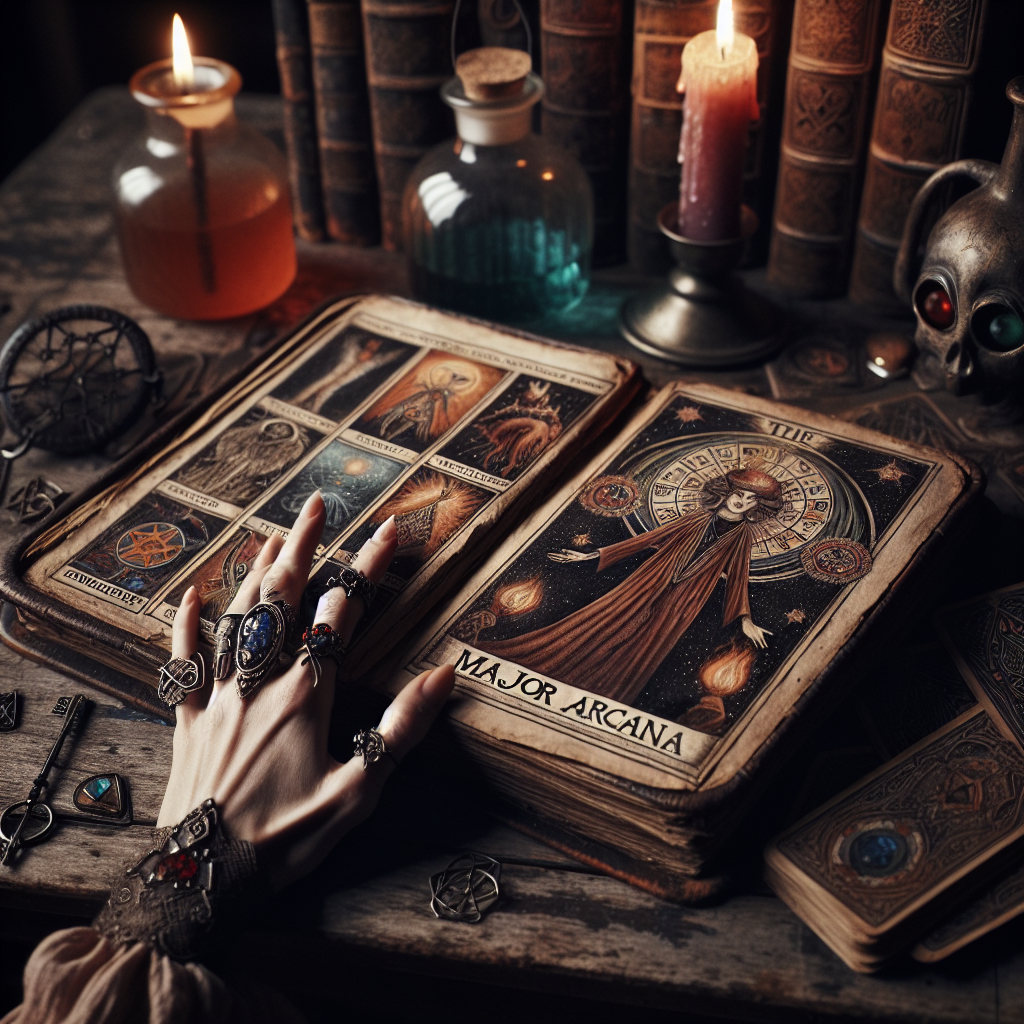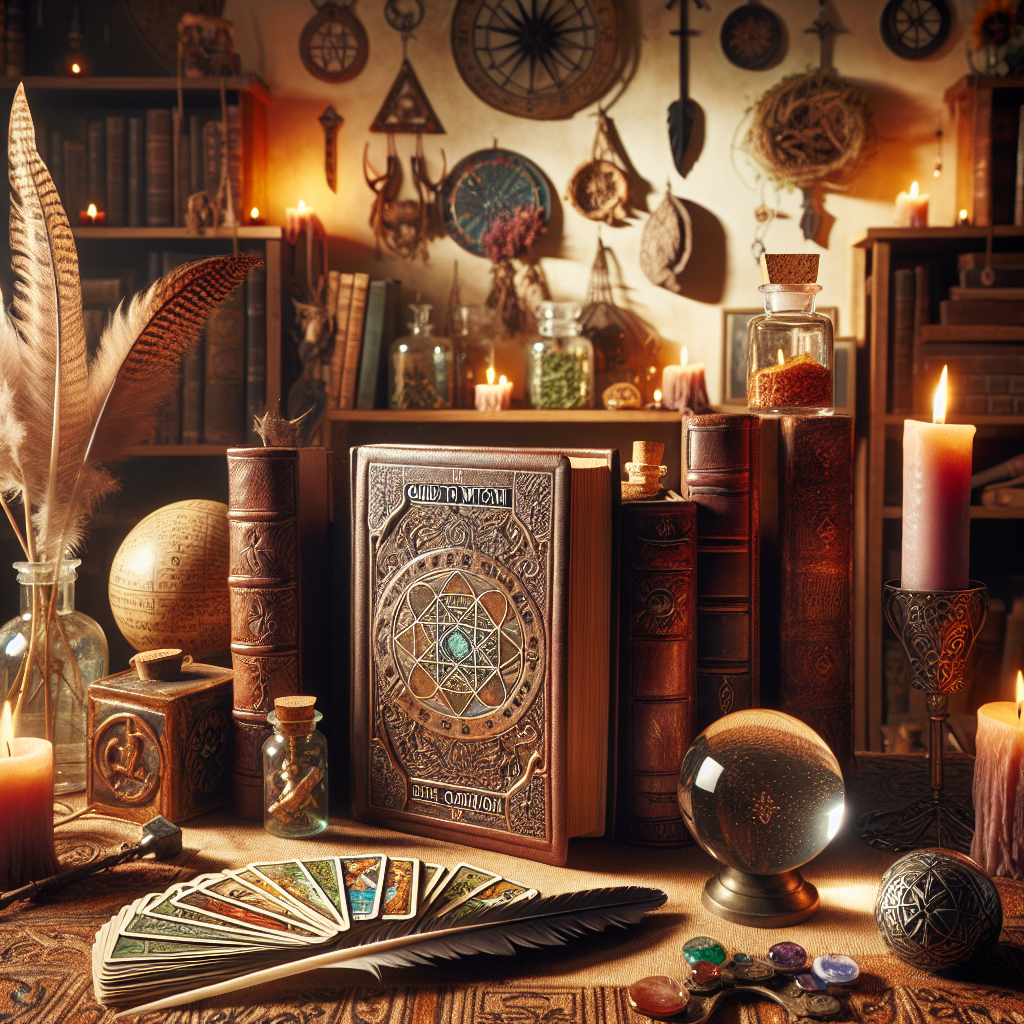As an Amazon Associate I earn from qualifying purchases.
↻
Last updated: December 24, 2025

Witchcraft, often associated with the practice of magical skills, spells, and abilities, has fascinated societies for centuries. From the wise women and herbal healers of ancient times to the contemporary depiction of witches in popular culture, the evolution of witchcraft is deeply embedded in human history. Historically, witchcraft has been subjected to varying degrees of acceptance and persecution, notably during the European witch trials of the 15th to 18th centuries, when tens of thousands were executed under accusations of witchery.
In modern times, witchcraft has undergone a renaissance, with many people finding solace and empowerment in its practices. These practices can include, but are not limited to, nature worship, the celebration of ancient festivals, and the use of magic for personal or communal purposes. Contemporary witchcraft, often under the umbrella term “Wicca,” is now recognized as a legitimate and growing religious movement, with a strong focus on spirituality and connection to nature.
Tarot cards, which originated in mid-15th century Europe as playing cards, have developed into a profound tool for divination and self-reflection. The traditional tarot deck consists of 78 cards, divided into the Major Arcana and Minor Arcana, each with its own symbolism, story, and meaning. Originally used for games, tarot gained a mystical significance over the centuries, with the first documented tarot divination occurring in the late 18th century.
The use of tarot cards for divination, commonly known as Tarotology, is widely practiced in contemporary witchcraft and standalone spiritual activities. A compelling statistic shows that in the United States alone, the sale of tarot cards has steadily increased over the past decade, reflecting a growing interest in mystical and spiritual self-discovery. People from various walks of life now use tarot readings for insights into their personal and professional lives, seeking guidance and understanding of the complex paths they navigate.
Engagement with tarot has expanded into the digital world as well. An increasing number of mobile apps and online services offer virtual tarot readings, making the ancient practice more accessible to a generation steeped in technology. This growth signifies a cultural shift towards a more open exploration of esoteric traditions, integrating old practices of witchcraft and tarot into the routines of everyday life.
Both witchcraft and tarot reading offer a sense of agency and a framework for individuals to explore their intuition, connect with their inner selves, and understand the world around them through a metaphysical lens. While the practice continues to evolve, these ancient traditions maintain their allure, showcasing the enduring human desire to find meaning beyond the tangible world.
html
What Are the Mystical Connections Between Witchcraft and Tarot?
Witchcraft and Tarot are two ancient practices rich in symbolism, tradition, and spiritual insights. Witchcraft, often seen as the craft of the wise, involves the practice of magical skills, spells, and rituals to invoke natural energies and manifest change. On the other hand, Tarot is a form of divination using a set of cards that can offer guidance, reflection on life's questions, and paths to self-discovery. Both share a deep-rooted connection in helping practitioners understand the deeper meanings of existence and tapping into the subconscious. The following sections will dive deeper into the mystical synergy of Witchcraft and Tarot, exploring their histories, philosophies, and how they complement each other in contemporary spiritual practices.
Witchcraft and tarot have long been intertwined, standing as twin pillars in a plethora of mystical and esoteric practices. Witchcraft, a broad term that encompasses a variety of magical practices and belief systems, often employs the use of symbols, rituals, and spells to affect change or gain insight. Tarot, on the other hand, is specifically a deck of 78 cards used for divination, self-reflection, and spiritual guidance, featuring symbolic imagery and archetypal figures that correspond to deep human experiences and universal themes.
**Historical Intersections of Witchcraft and Tarot**
Dating back to the mid-15th century, tarot cards were initially used for games and gradually incorporated into magical practices. It was not until the 18th century that tarot became more widely associated with the mystical and occult. Advancements of the time in astrology, alchemy, and Kabbalah influenced the way the tarot was viewed, adding a layer of depth to its interpretive power that appealed to those practicing witchcraft.
**Tarot in Modern Witchcraft Practice**
In contemporary witchcraft, tarot cards are instruments for understanding the past, reflecting on the present, and forecasting future potentials. They serve as a tool for witches to hone their intuition and tap into the unconscious. Commonly, tarot cards are utilized within rituals to represent specific intentions or to communicate with spiritual entities.
**Different Tarot Decks and Correspondences**
Numerous tarot decks exist today, each with unique art and thematic focus. Key among these are the Rider-Waite-Smith tarot, often used as a standard for beginners, and the Thoth tarot, which incorporates complex astrological and numerological correspondences. Witches may choose a deck based on personal resonance or specific magical work they are undertaking.
**Card Meanings and Witchcraft Symbolism**
Each tarot card has a range of meanings that can be adapted and interpreted in the context of witchcraft. The Major Arcana, consisting of 22 cards, covers broad themes and life lessons, such as The Fool representing beginnings or The Tower signifying sudden upheaval. The Minor Arcana's 56 cards reflect everyday affairs and can be corresponded to elements, seasons, and magical workings.
**Tarot Spreads and Witchcraft Rituals**
Tarot spreads—the layouts in which cards are placed—vary widely and can be crafted to suit any particular need or question. Witches might use simple three-card spreads for quick guidance or elaborate Celtic Cross spreads for more in-depth exploration. Furthermore, witches could craft spells or perform rituals based on the guidance from a tarot spread, meditating on a card or incorporating it into a spell jar, for instance.
**Tarot as a Gateway for Psychic Development**
Witches often use tarot as a means to develop psychic abilities. Pulling a daily card can sharpen intuition, while meditating on the imagery of a particular card can open clairvoyant channels. Tarot can be a solitary practice or part of a group ritual, fostering both personal insight and communal magical growth.
**Ethical Considerations in Witchcraft and Tarot**
Ethics play a significant role in witchcraft communities, with many adhering to some form of ethical guideline, such as the Wiccan Rede “An it harm none, do what ye will. Ethical tarot readers give readings with empathy and respect for the client's autonomy, avoiding fatalistic predictions and ensuring that the practice is empowering rather than disempowering.
Incorporating statistics into the conversation reflects the burgeoning interest in these esoteric fields. A study by the American Federation of Certified Psychics and Mediums in 2014 found that 73% of psychics, mediums, and tarot readers reported an increase in demand for their services over the previous year, indicating that the thirst for spiritual guidance is strong and growing. This number is thought to have only increased since then, given the resurgence of interest in witchcraft and tarot observed in online communities and mainstream culture.
- What is the connection between witchcraft and Tarot?
Witchcraft and Tarot are connected through their use as tools for spiritual introspection, guidance, and divination. In witchcraft, Tarot cards can be used to tap into the practitioner's intuition, seek insight into situations, or communicate with the spiritual realm.
- Can anyone learn to read Tarot, or is it only for witches?
Anyone can learn to read Tarot cards; it is not exclusive to witches. Tarot reading is a skill that can be developed through study, practice, and developing one's intuition, regardless of one's background in witchcraft.
- Do you need to be psychic to read Tarot cards effectively?
Being psychic is not a necessity for reading Tarot cards effectively. Tarot reading is more about connecting with one's intuition and interpreting the symbols and imagery on the cards to derive meaning relevant to the question or situation at hand.
- Is it safe to practice Tarot reading?
Yes, Tarot reading is generally considered safe. It is a form of divination that many people use for personal development, decision-making, and reflection. However, it is important to approach Tarot reading with a respectful and grounded mindset.
- What should I do to prepare for a Tarot reading?
Before a Tarot reading, it's helpful to create a calm environment, clear your mind, and possibly set an intention or ask a specific question. Some people like to meditate or clear the space energetically, for example, with sage, to prepare for a reading.
- Are Tarot cards evil or associated with negative forces?
Tarot cards themselves are not evil or inherently associated with negative forces. They are tools for insight and reflection. How they are perceived often depends on cultural and religious contexts, but many view them as a positive means of understanding life's challenges.
- How do I choose the right Tarot deck for me?
To choose the right Tarot deck, consider your personal connection to the imagery, the art style, and whether the symbolism resonates with you. It may help to see and handle various decks if possible, or read reviews and look at samples online before making your decision.
- How often should I consult the Tarot for guidance?
The frequency of Tarot consultations varies depending on personal preference and needs. Some consult the Tarot daily for reflection, while others may do so less frequently or during significant life events. It's important to follow your intuition on what feels right for you.
- Can Tarot readings predict the future?
Tarot readings can offer insights into potential future outcomes based on current trajectories, but they do not predict the future with absolute certainty. Tarot is more about exploring various aspects of your life and enabling you to make informed choices.
- How can a beginner learn to read Tarot cards effectively?
A beginner can learn to read Tarot cards effectively by studying the meanings of the cards, practicing regularly, and trusting their own interpretation of the cards in the context of the querent's situation. It's also beneficial to read books, join workshops, or engage with online Tarot communities for guidance and support.

Conclusion
Throughout history, witchcraft has been a complex and often misunderstood practice, evolving across cultures and time. In its modern form, witchcraft is seen by many as a path of empowerment, self-discovery, and connection to the natural world. It operates on the belief in the power of natural energy and the laws of attraction, with practices ranging from simple rituals and spellcasting to elaborate ceremonies. The guide has demonstrated that witchcraft, in its essence, encourages practitioners to live harmoniously with nature while tapping into their inner strength and intuition.
Tarot, as an integral tool within the realm of witchcraft, provides practitioners with a medium for introspection and divination. Its rich symbolism and archetypal imagery facilitate a deep understanding of the subconscious mind, aiding in the discernment of past, present, and future events or feelings. Utilized effectively, tarot serves not just as a predictive tool but as a reflective one that can guide individuals through personal growth and decision-making processes. The insights from the guide have shown that while tarot reading requires a level of skill and interpretation, the true power lies in the reader's ability to connect with the cards and derive personal meaning from them. Together, witchcraft and tarot offer a transformative journey for those seeking to explore the mysteries of the universe and their place within it.
Amazon and the Amazon logo are trademarks of Amazon.com, Inc, or its affiliates.
Continue Your Magical Journey
Free Witchcraft Starter Kit
Get 6 free printable PDFs: grimoire pages, moon calendar, spells, crystals, herbs, and tarot journal.
We respect your privacy. Unsubscribe anytime.
Enhance Your Practice
As an Amazon Associate, I earn from qualifying purchases.

